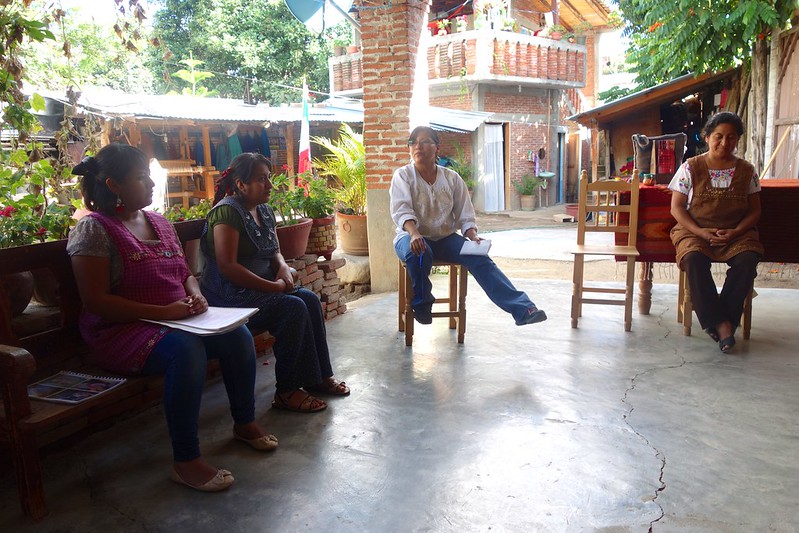IDIL: Mental Health Access for Indigenous People in Oaxaca
 The United Nations General Assembly (UNGA) has designated 2022 to 2032 as the International Decade of Indigenous Languages (IDIL). The United Nations Educational, Scientific and Cultural Organization (UNESCO) leads global efforts to support this initiative. In Mexico, the project La Enfermedad de la que Nadie Habla en el Pueblo (ENHP) aims to expand access to mental health information and services. It does so by providing resources in Indigenous languages and incorporating Indigenous perspectives.
The United Nations General Assembly (UNGA) has designated 2022 to 2032 as the International Decade of Indigenous Languages (IDIL). The United Nations Educational, Scientific and Cultural Organization (UNESCO) leads global efforts to support this initiative. In Mexico, the project La Enfermedad de la que Nadie Habla en el Pueblo (ENHP) aims to expand access to mental health information and services. It does so by providing resources in Indigenous languages and incorporating Indigenous perspectives.
The International Decade of Indigenous Languages
The UNGA established the International Decade of Indigenous Languages (IDIL 2022-2032) to fulfill the objectives of the United Nations Declaration on the Rights of Indigenous Peoples. Throughout this decade, initiatives focus on preserving, revitalizing and promoting Indigenous languages worldwide. The Australian Government reports that many of these languages have reached a critical level of endangerment.
UNESCO estimates that approximately 40% of languages spoken will no longer be in use a century from now. Indeed, many are likely to be Indigenous languages. During International Decades, global facilitators coordinate action and mobilizations to raise awareness on a particular topic. La Enfermedad de la que Nadie Habla en el Pueblo is one example of coordinated action for IDIL.
“La Enfermedad de la que Nadie Habla en el Pueblo”
Indigenous youths developed the project La Enfermedad de la que Nadie Habla en el Pueblo (ENHP), which translates to The illness nobody talks about in the village, to make mental health information accessible in Indigenous languages. ENHP successfully provided information in 30 Indigenous languages, addressing a critical gap in health communication. In a UNESCO article, the director of the Network of Interpreters and Intercultural Promoters, Eduardo Ezequiel Martínez Gutiérrez, stated that at least 30% of Oaxaca’s population is not fluent in their doctor’s or government’s language, a key issue ENHP aims to solve. The project also trains interpreters to act as intermediaries in mental health spaces.
According to Socialab, 65% of Indigenous people in Oaxaca, who speak up to 177 linguistic variants, cannot engage with content in Spanish. In response, the ENHP produced short videos with interpreters from various Indigenous communities. These videos discuss the symptoms of anxiety and depression and offer coping strategies. The project’s translation and interpretation efforts exemplify the goals of the International Decade of Indigenous Languages by improving access to mental health care for Indigenous peoples in a culturally relevant context.
Implementation of ENHP
The UNESCO program Impulso Joven, “Because Youth Matter,” awarded $10,000 in startup capital to 20 youth projects across 11 Caribbean and Latin American countries, including ENHP. Impulso Joven also provided practical workshops, training sessions and mentorship. The ENHP project unfolded in four stages. Initially, each interpreter completed a course on emotional disorders and mental health. In the second stage, interpreters adapted the course content to be culturally and linguistically relevant for Indigenous territories. Following this, the third stage involved the creation of audio and video materials. Finally, in the fourth stage, the team distributed these materials to Indigenous communities to help reduce the stigma around mental health.
Importance of Reconceptualization
ENHP’s efforts to reinterpret mental health information plays a crucial role in making mental health resources accessible to more Indigenous Peoples. This approach aligns with the goals of the International Decade of Indigenous Languages. The goals focus on actions supporting the United Nations Declaration on the Rights of Indigenous Peoples. The American Psychiatric Association (APA) has studied the barriers Indigenous Peoples in the United States (U.S.), Canada, the Pacific Islands and Australia face in accessing mental health services. These barriers include mistrust of mainstream services, social stigma associated with seeking help, insufficient awareness to recognize signs of poor mental health and the challenges of accessing mental health services in remote areas.
APA emphasizes that barriers to accessing mental health services for Indigenous populations should be viewed within the broader context of systemic, structural and societal challenges. Sandra García Reyes, an educator with ENHP, told UNESCO that mental health and self-care are integral to community care. ENHP has reinterpreted mental health information from a Western perspective to a holistic and relational approach. Furthermore, they take into account the intergenerational impacts of forced assimilation, relocation and discrimination.
Impacts of the IDIL
IDIL provides a framework for collaboration among diverse stakeholders, promoting coherence, continuity and cross-cultural dialogue in actions taken worldwide. IDIL is a global call to develop policies and make strategic investments to protect and revitalize Indigenous languages and support their speakers. According to UNESCO, IDIL involves 4,213 communities from 60 countries and 1,772 organizations. Across these communities, 202 languages are spoken and 2,635 events have been organized to recognize IDIL. Projects like La Enfermedad de la que Nadie Habla en el Pueblo exemplify how youth-led initiatives can enhance the lives of Indigenous communities by incorporating intersectional, community and cultural perspectives while safeguarding their languages.
– Tanisha Groeneveld
Tanisha is based in Leeds, UK and focuses on Good News and Global Health for The Borgen Project.
Photo: Flickr
